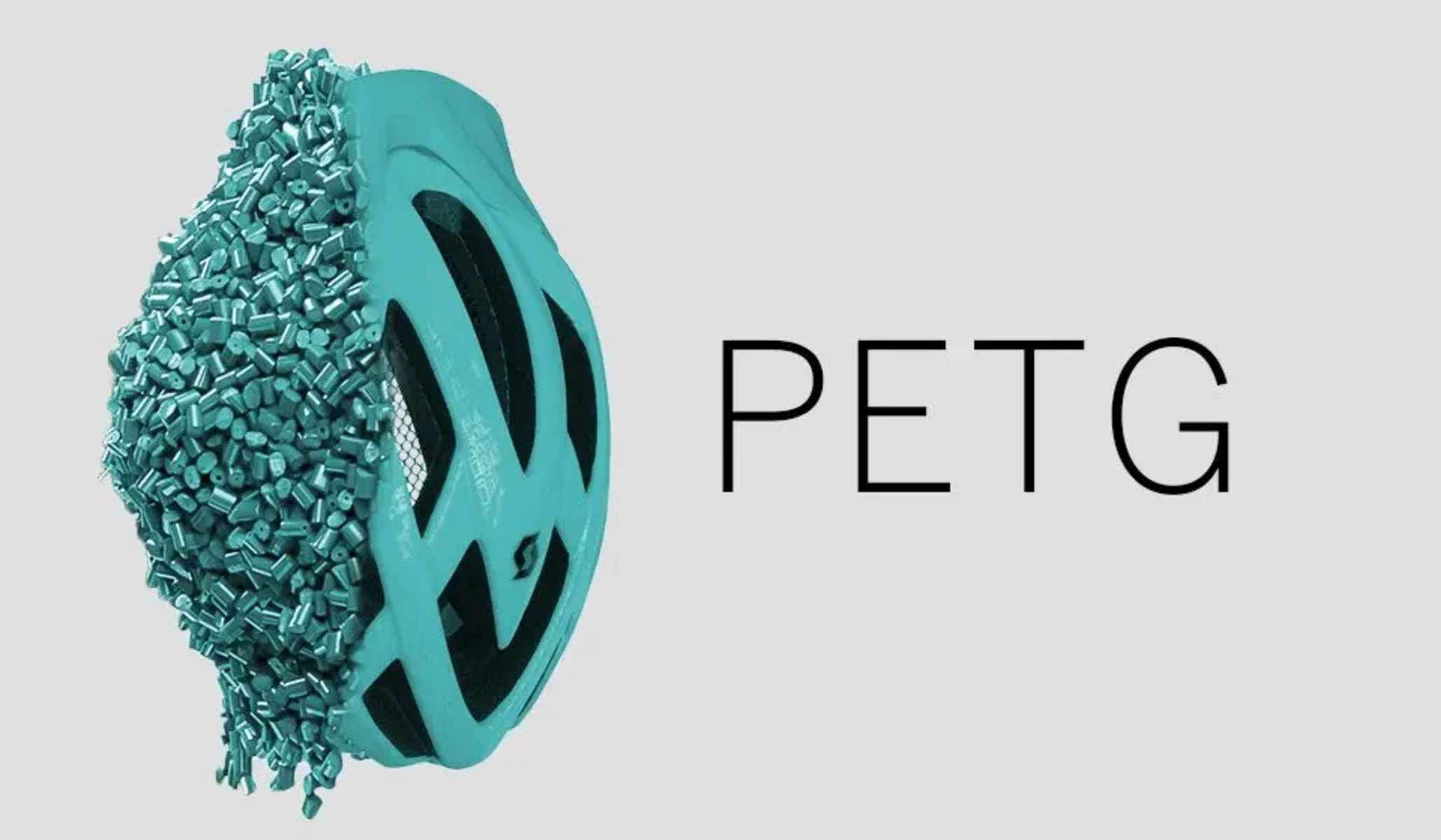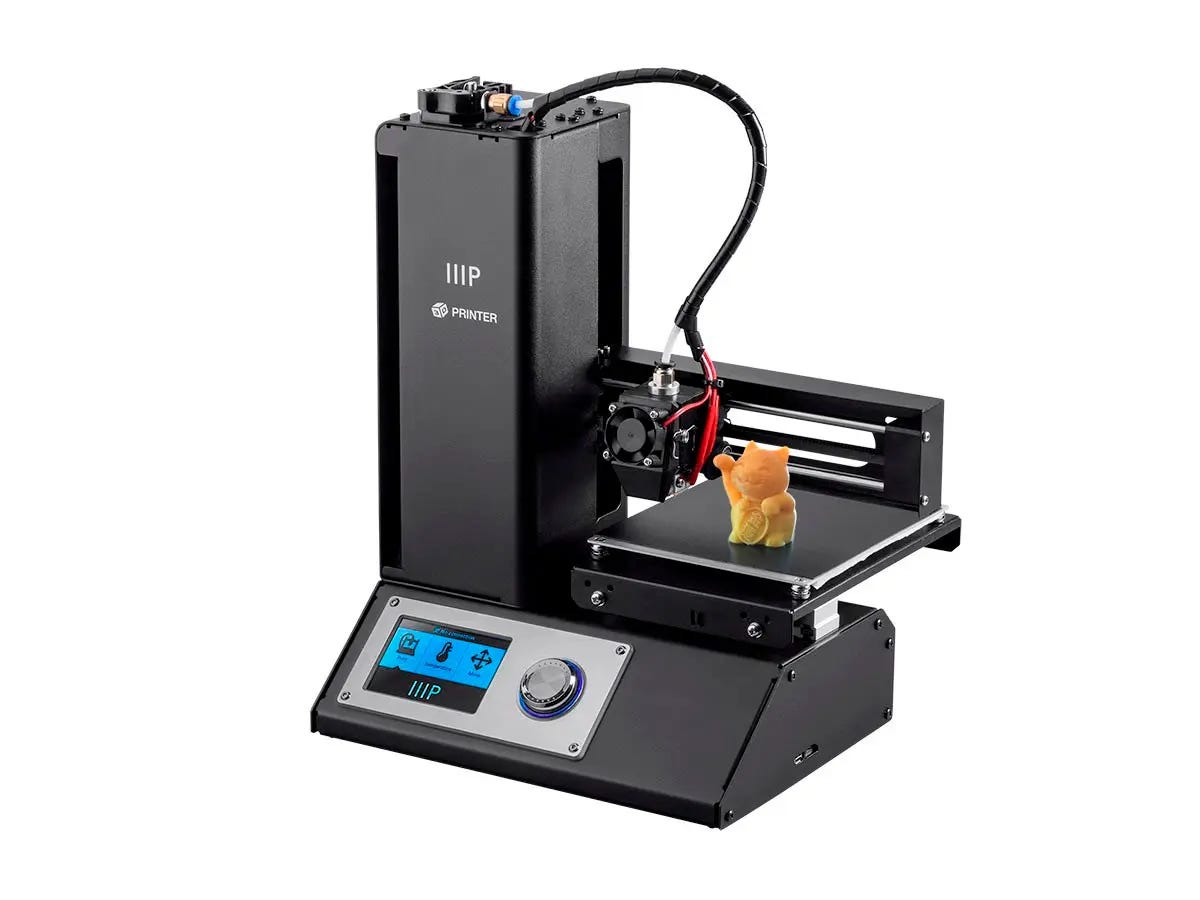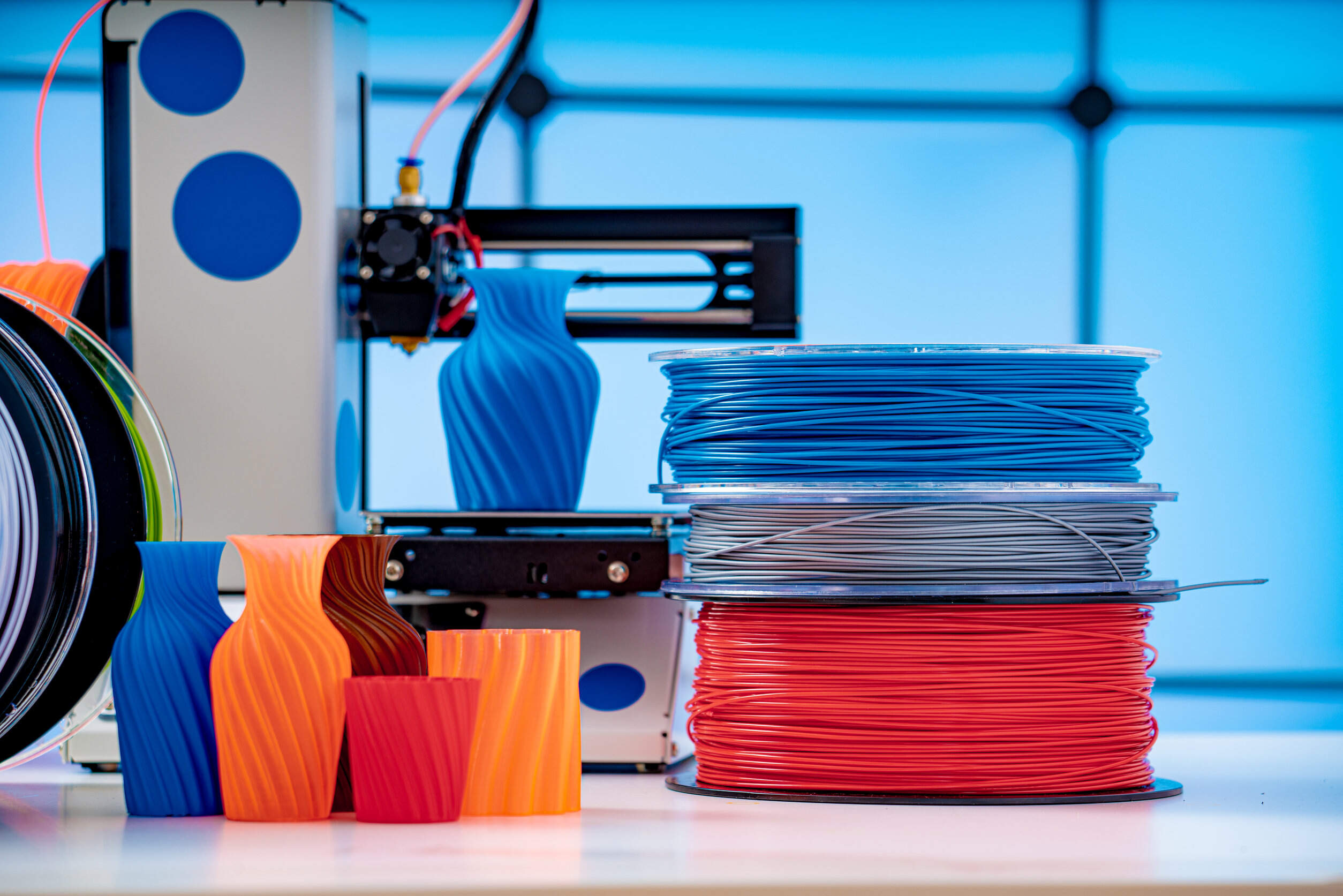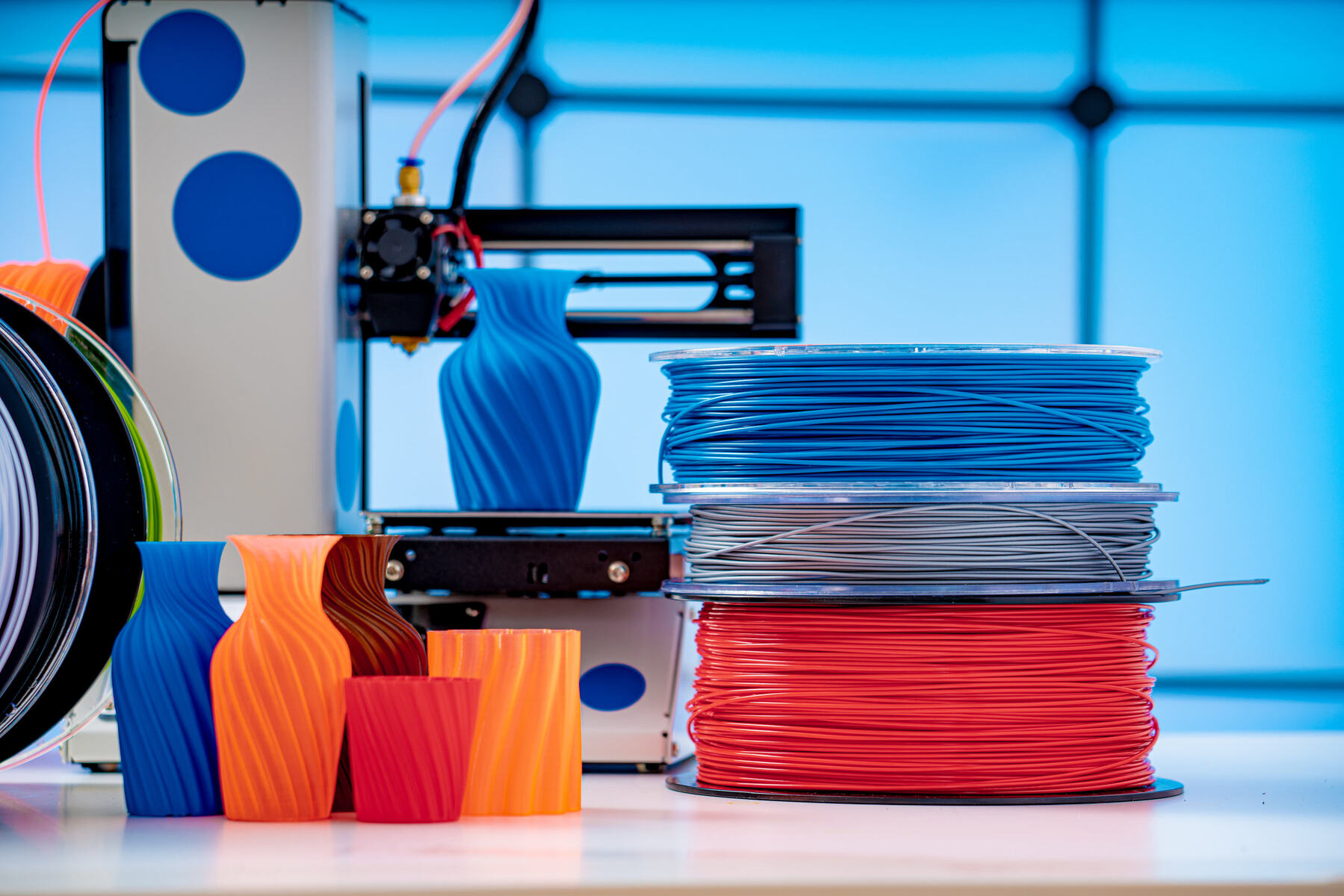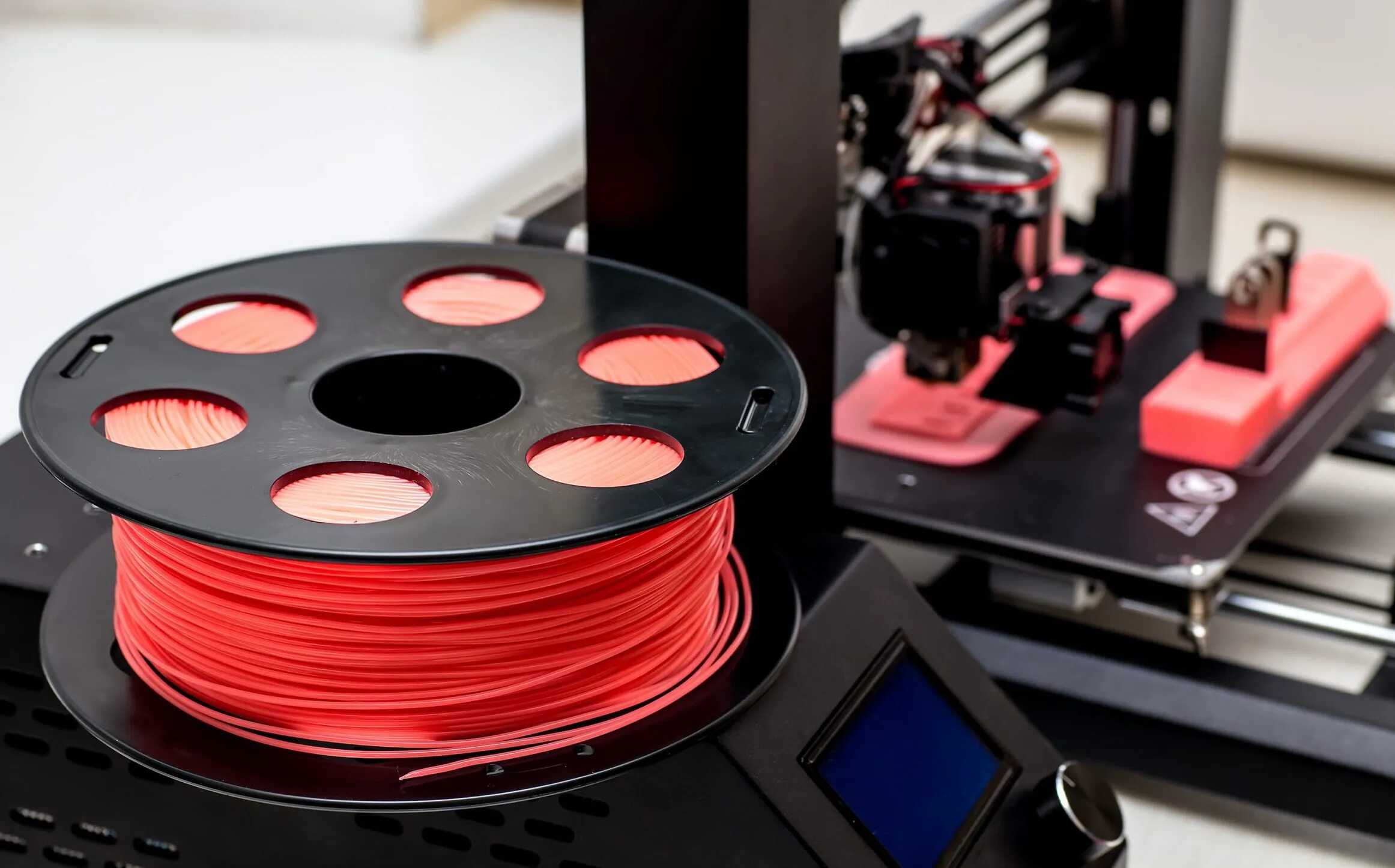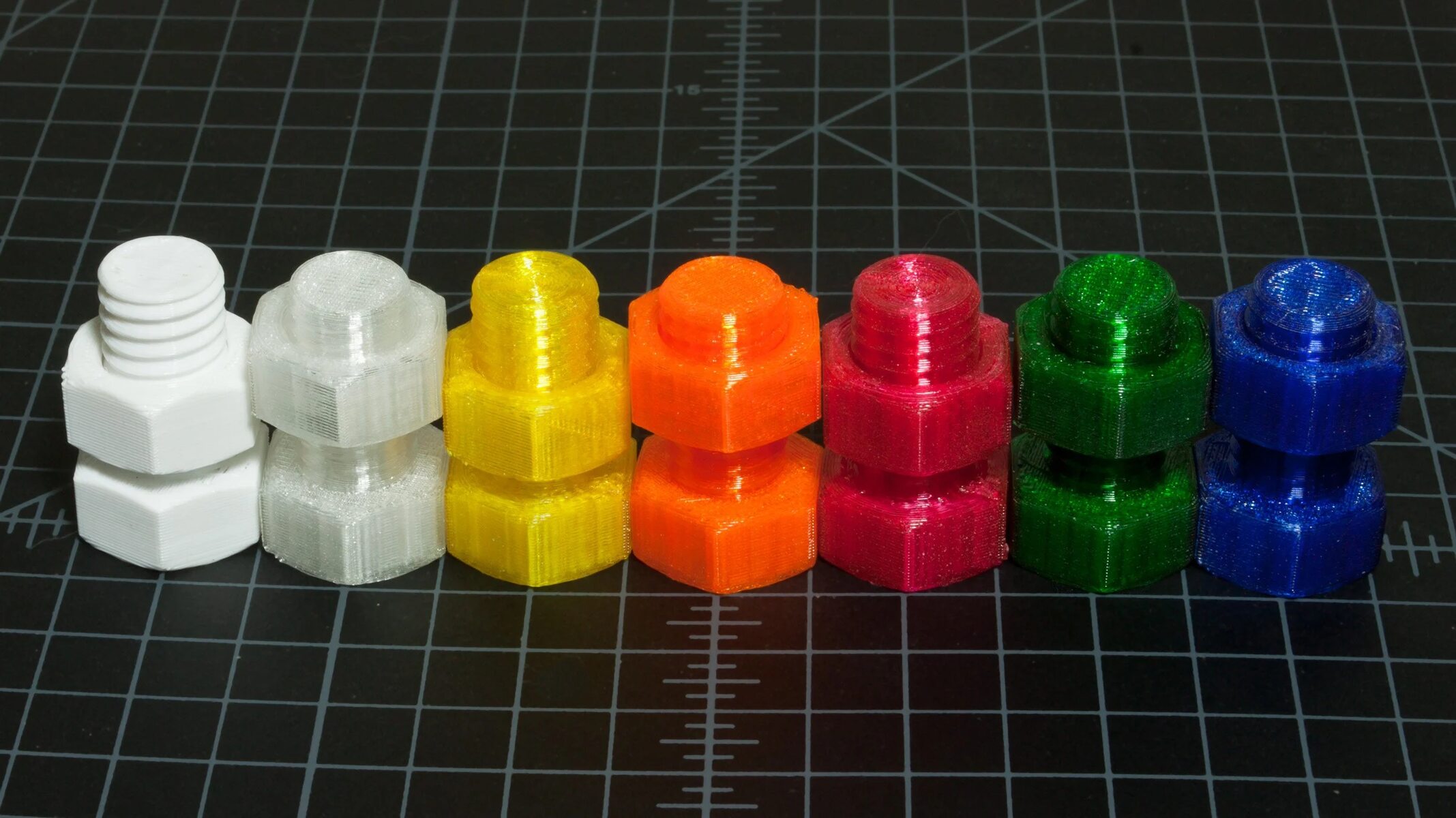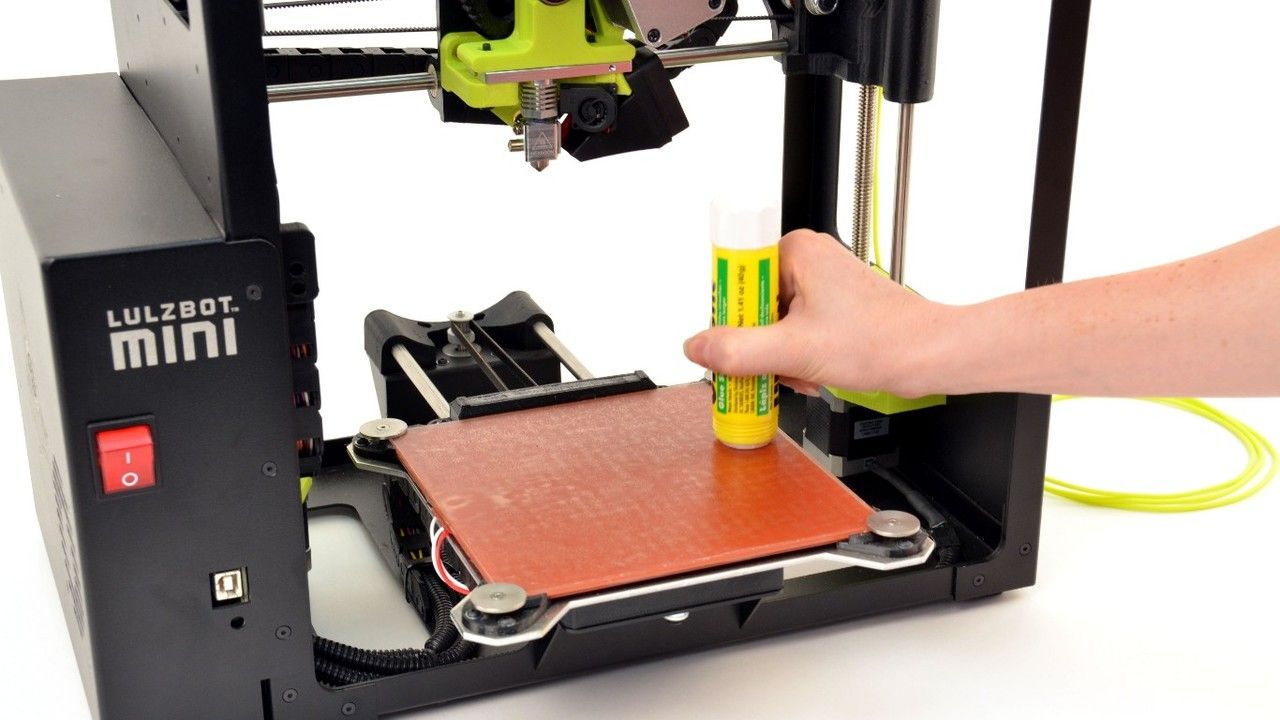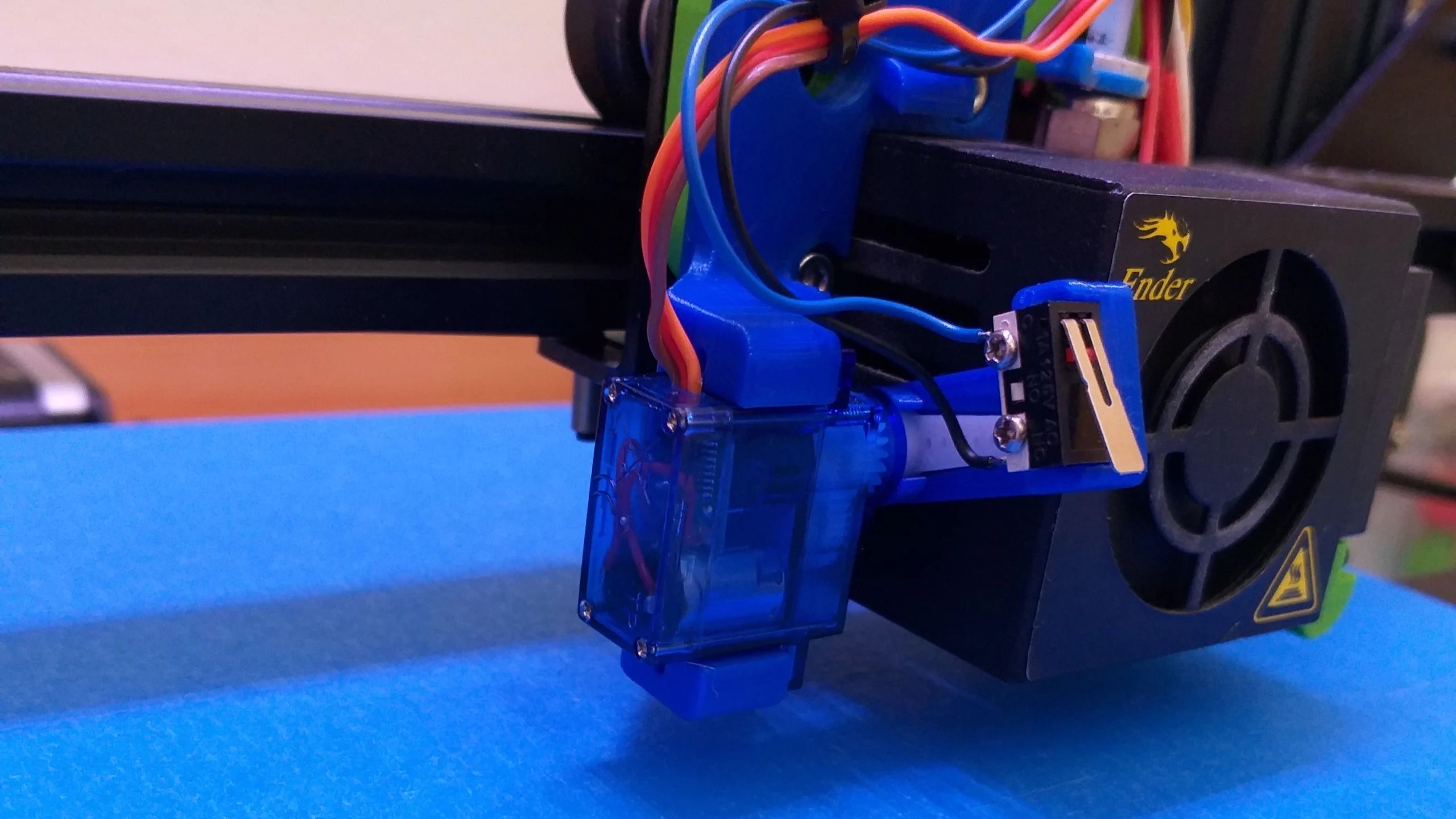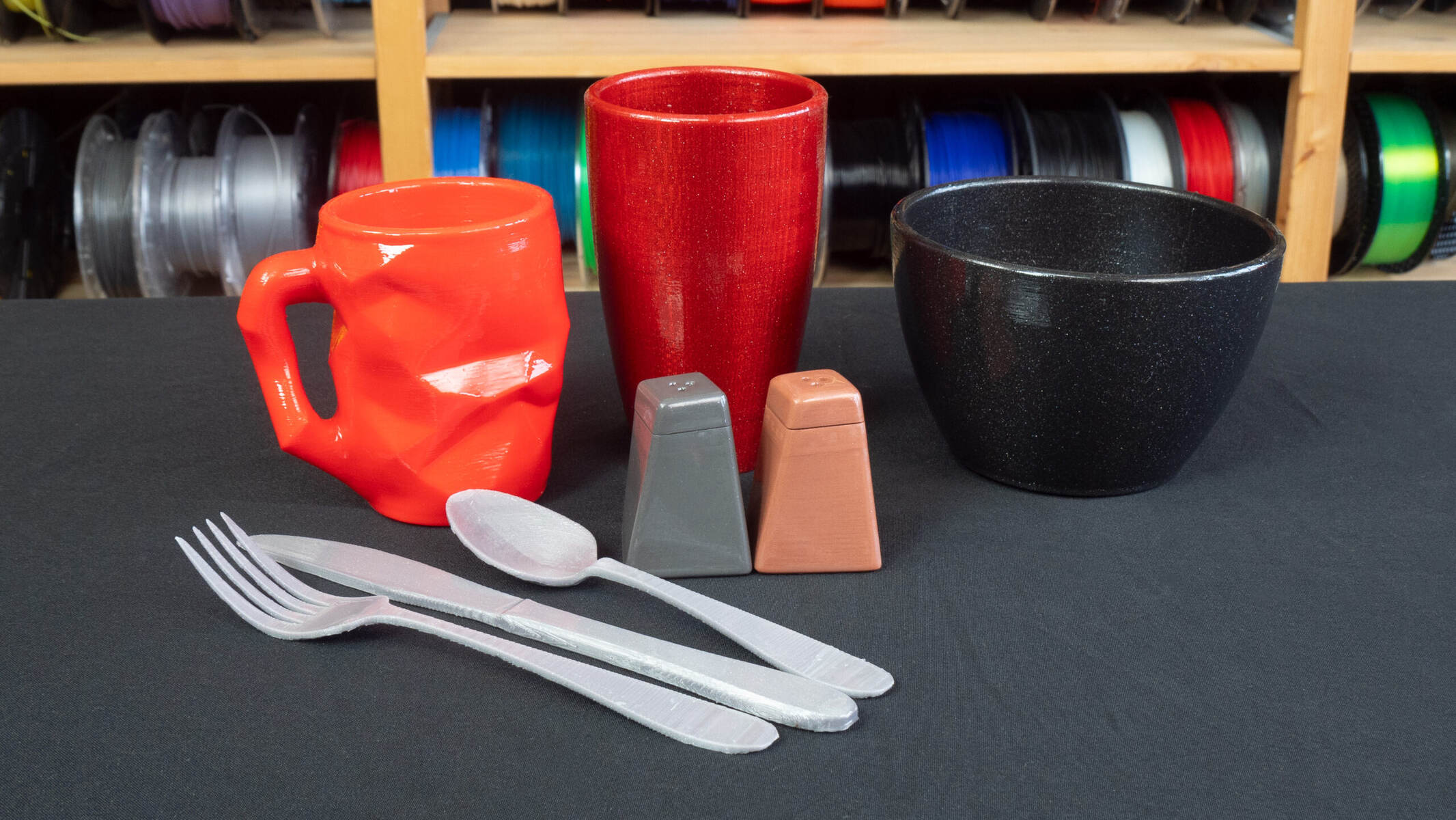Introduction
3D printing technology has revolutionized various industries, enabling the creation of intricate and customized objects with ease. Among the many materials used in 3D printing, PETG (Polyethylene terephthalate glycol-modified) has gained significant popularity. PETG offers a myriad of benefits that make it a preferred choice for both professionals and hobbyists alike.
PETG is a thermoplastic material that combines the strength and durability of materials like ABS (Acrylonitrile Butadiene Styrene) with the ease of use and transparency of materials like PLA (Polylactic Acid). This combination of properties makes PETG suitable for a wide range of applications, from functional prototypes to end-use parts.
In this article, we will delve into the world of PETG 3D printing, exploring its benefits, applications, and tips for successful printing. Whether you are a beginner or an experienced 3D printing enthusiast, this article aims to provide you with valuable insights and knowledge to enhance your PETG printing experience.
What is PETG?
PETG (Polyethylene terephthalate glycol-modified) is a popular thermoplastic material used in 3D printing. It is a variant of PET (Polyethylene terephthalate), commonly used in the production of plastic bottles and food containers. PETG is known for its excellent combination of strength, flexibility, and chemical resistance, making it a versatile material suitable for a wide range of applications.
PETG is classified as an amorphous thermoplastic, meaning it does not have a definite crystalline structure. This characteristic gives PETG its unique properties, such as transparency, toughness, and resistance to impact. It is also FDA approved, making it safe for use in applications that come into contact with food and beverages.
One key advantage of PETG is its ease of printing. It has a lower printing temperature compared to materials like ABS, minimizing the risk of warping and making it more beginner-friendly. PETG also exhibits good layer adhesion, allowing for strong and durable prints. Its low level of moisture absorption makes it less prone to clogging in the printer nozzle, ensuring consistent and reliable printing.
Furthermore, PETG is a relatively flexible filament, making it less brittle compared to materials like PLA. This flexibility gives PETG prints increased resistance to impact, making it suitable for functional prototypes and objects that will undergo stress or strain.
In terms of aesthetics, PETG prints have a glossy and transparent appearance, similar to glass. This makes PETG a preferred choice for projects that require a visually appealing finish. Additionally, PETG is also available in a wide range of vibrant colors, providing ample options for creative and colorful prints.
Overall, PETG is a versatile and user-friendly 3D printing material that offers a perfect balance of strength, flexibility, and visual appeal. Its unique properties make it highly suitable for both professional and hobbyist applications, making it a popular choice among the 3D printing community.
Benefits of PETG 3D Printing
PETG 3D printing offers a plethora of benefits that set it apart from other 3D printing materials. Whether you’re a beginner or an experienced enthusiast, understanding these advantages will help you make informed decisions when choosing PETG for your next project. Here are some notable benefits of PETG 3D printing:
- Strength and Durability: PETG combines the strength of materials like ABS with the flexibility of PLA. It exhibits excellent layer adhesion, resulting in strong and durable prints. This makes PETG suitable for functional prototypes, mechanical parts, and objects that require high impact resistance.
- Chemical Resistance: PETG is known for its resistance to chemicals, including acids, bases, and solvents. This makes it suitable for applications in chemically challenging environments, such as laboratory equipment and chemical containers.
- Transparency and Aesthetics: PETG prints have a glossy and transparent appearance similar to glass, making them ideal for projects that require a visually appealing finish. Additionally, PETG is available in a wide range of vibrant colors, allowing for creative and eye-catching prints.
- Easy to Print: PETG has a lower printing temperature compared to materials like ABS, reducing the risk of warping. It also exhibits minimal shrinkage during the cooling process, resulting in more reliable prints. PETG’s low moisture absorption reduces the chances of clogging in the printer nozzle, ensuring smooth and consistent printing.
- Safe for Food Contact: PETG is FDA approved, meaning it is safe for applications that come into contact with food and beverages. This makes it suitable for creating custom utensils, food containers, and other products that require food-grade material.
- Environmentally Friendly: PETG is a recyclable material, contributing to a more sustainable approach to 3D printing. Recycling PETG reduces waste and helps minimize the environmental impact of the printing process.
With these benefits, it’s no surprise that PETG has become a popular choice among 3D printing enthusiasts. Its unique combination of strength, durability, chemical resistance, and aesthetic appeal makes it a versatile material for a wide range of applications.
PETG vs. Other 3D Printing Materials
When it comes to 3D printing, there is a wide range of materials available, each with its own unique properties and characteristics. PETG stands out among these materials due to its specific attributes that offer advantages over other commonly used 3D printing materials. Let’s explore how PETG compares to some of the other popular materials in the 3D printing realm.
PETG vs. PLA: PLA (Polylactic Acid) is one of the most widely used materials in 3D printing due to its ease of use and biodegradability. While PLA is beginner-friendly, PETG offers better strength and durability. PETG also has excellent chemical resistance, making it suitable for applications where PLA may not hold up well.
PETG vs. ABS: ABS (Acrylonitrile Butadiene Styrene) is known for its strength and suitability for functional parts. However, ABS requires a higher printing temperature and has a tendency to warp, making it more challenging to print compared to PETG. Additionally, PETG has better layer adhesion and impact resistance, making it a more favorable choice for applications that require durability.
PETG vs. Nylon: Nylon is a versatile material with excellent strength, durability, and chemical resistance. While nylon offers superior mechanical properties, it can be more challenging to print due to its high printing temperature and the need for a heated print bed. PETG, on the other hand, has similar properties but is easier to print and does not require as high of a printing temperature.
PETG vs. TPU: TPU (Thermoplastic Polyurethane) is a flexible and elastic material often used for applications requiring rubber-like properties. PETG, although less flexible than TPU, offers better impact resistance and durability. PETG prints are also generally easier to achieve compared to TPU, which may require specialized printer settings and additional considerations.
In summary, PETG is a versatile material that competes favorably with other 3D printing materials. Its combination of strength, durability, ease of printing, and chemical resistance makes it a popular choice for many applications. While other materials have their specialized uses, PETG provides a balanced set of properties for a wide range of 3D printing projects.
How to Choose PETG Filament?
Choosing the right PETG filament for your 3D printing projects is crucial to achieve the desired results. Here are some factors to consider when selecting a PETG filament:
- Quality and Brand: Opt for a reputable brand that is known for producing high-quality filaments. Look for positive reviews and feedback from other users to ensure consistent performance and reliable results.
- Filament Diameter: Check the specifications of your 3D printer to determine the appropriate filament diameter. The most common diameters for PETG filaments are 1.75mm and 2.85mm.
- Color: PETG filaments come in a variety of colors. Choose a color that suits your project or go for a transparent filament if you require a see-through effect.
- Specialty PETG: Some manufacturers offer specialty PETG filaments with added features, such as enhanced flexibility or increased UV resistance. Consider these options if they align with your specific project requirements.
- Printing Temperature: Check the recommended printing temperature for the PETG filament you are considering. Different brands and formulations may have slightly different temperature requirements. Ensure that your 3D printer’s hot end can reach and maintain the necessary temperature.
- Compatibility with Hot Bed: PETG typically benefits from a heated print bed. Ensure that your 3D printer has a heated bed and can reach the recommended bed temperature for the particular PETG filament you plan to use.
- Spool Size: Consider the size of the filament spool relative to your project’s requirements and your 3D printer’s spool holder capacity. Larger spools may be more cost-effective for longer or more extensive prints, but they may not fit in all printers.
- Price and Value: Evaluate the cost of the PETG filament in relation to its quality and performance. While it’s important to consider your budget, prioritize value over the cheapest option to ensure consistent and satisfactory results.
- Availability: Check the availability of the PETG filament from your chosen brand. Ensure that it is readily accessible and you can easily acquire additional spools if needed.
By considering these factors, you can make an informed decision when choosing a PETG filament that will meet your specific requirements, resulting in successful and satisfying 3D printing projects.
Tips for Successful PETG 3D Printing
To achieve optimal results with PETG 3D printing, it’s important to follow certain guidelines and implement specific techniques. Here are some tips to help you achieve successful PETG prints:
- Use an Enclosed Printer: PETG is known to be sensitive to air drafts during printing. Using an enclosed 3D printer or creating an enclosure around your printer can help maintain a stable printing environment and prevent warping or delamination.
- Level Your Print Bed: Ensure that your print bed is properly leveled to achieve proper adhesion and prevent lifting of the print. A level bed will help in achieving consistent layer adhesion throughout the print.
- Set the Proper Printing Temperature: PETG requires specific printing temperatures. It is recommended to start with a nozzle temperature between 230-250°C and a bed temperature between 70-80°C. Fine-tune these settings based on your specific filament and printer.
- Print Slowly: PETG prints generally benefit from slower print speeds compared to other filaments. Slowing down the print speed can improve the overall quality and reduce the likelihood of issues like stringing or blobbing.
- Use a Brim or Raft: PETG has a higher tendency to warp compared to other materials. To improve bed adhesion and minimize warping, consider using a brim or raft when printing. This will provide a larger surface area for the first layer and help keep the print anchored to the bed.
- Ensure Proper Cooling: PETG prints require adequate cooling, especially for overhangs and bridges. Having a well-ventilated print environment or using a fan to cool the printed layers can help improve the print’s overall quality.
- Experiment with Retraction Settings: PETG can be prone to stringing. Experiment with retraction settings in your slicer software to minimize stringing. Adjust the retraction distance and speed to find the optimal settings for your specific PETG filament.
- Consider Increasing the Print Bed Adhesion: If you are experiencing adhesion issues, try using a layer of adhesive such as hairspray, glue stick, or a specialized 3D printing bed adhesive. This can improve initial adhesion and prevent the print from lifting or warping.
- Post-Processing Techniques: After printing, you can enhance the appearance and strength of your PETG prints by post-processing techniques such as sanding and polishing. This can help remove any imperfections and gives a smoother finish to your prints.
By implementing these tips, you can greatly increase your chances of achieving successful prints with PETG. Remember, some experimentation may be required to find the ideal settings for your specific printer and filament, so don’t be afraid to adjust and fine-tune as needed.
Common Issues with PETG Printing and How to Troubleshoot Them
Like any 3D printing material, PETG can present some challenges during the printing process. Understanding and knowing how to troubleshoot these common issues will help you overcome them and achieve successful PETG prints. Here are some common issues and their potential solutions:
- Warping and Lifting: PETG is prone to warping and lifting, especially on larger prints. Ensure that the print bed is level and clean. Consider using a brim or raft to improve adhesion. Increase the bed temperature and use an enclosure to maintain a stable printing environment.
- Stringing and Oozing: PETG can exhibit stringing and oozing, resulting in undesired wisps or blobs between printed parts. Adjust the retraction settings in your slicer software to minimize stringing. Increase travel speed and incorporate a small amount of coasting to reduce pressure in the nozzle.
- Poor Layer Adhesion: Inadequate layer adhesion can lead to weak and brittle prints. Ensure that your print bed is clean and properly leveled. Adjust the printing temperature to ensure optimal layer adhesion. Increase cooling or decrease print speed to allow each layer to solidify properly.
- Extrusion Issues: Uneven extrusion or inconsistent flow during printing can result in gaps or under-extrusion. Check and clean the printer’s nozzle to ensure it is clear of any debris or clogs. Adjust the extrusion multiplier or flow rate in your slicer software to ensure consistent material flow.
- Print Sticking Too Well: PETG can adhere strongly to the print bed, making it difficult to remove the print without damaging it or the bed. Let the print bed cool down to room temperature before attempting to remove the print. Use a spatula or scraper with caution to gently separate the print from the bed.
- Brittleness: If your PETG prints turn out brittle and prone to breaking, it may be due to insufficient cooling or improper thickness of the printed walls. Increase cooling to allow for better layer bonding. Adjust the print settings to increase the shell thickness for added strength.
- Printing Artifacts: PETG prints can sometimes exhibit artifacts such as zebra stripes, layer lines, or inconsistent surface finish. Check and tighten any loose belts or screws on your printer. Adjust printing speed, temperature, and cooling settings to optimize print quality.
- Nozzle Clogging: Although PETG is less prone to nozzle clogging compared to other materials, it can still happen. Ensure that the filament is stored in a dry environment to prevent moisture absorption. Perform regular hot and cold pulls to clean the nozzle and clear any obstructions.
Remember that troubleshooting 3D printing issues requires a systematic approach and may involve multiple factors. It may be necessary to make small adjustments to various settings and techniques to achieve the desired results. Don’t hesitate to experiment and iterate to find the most suitable solutions for your specific PETG printing challenges.
Applications of PETG 3D Printing
PETG 3D printing has a wide range of applications across various industries. Its unique combination of strength, durability, and versatility makes it suitable for both functional and aesthetic purposes. Here are some notable applications of PETG 3D printing:
- Prototyping: PETG is commonly used for functional prototyping due to its strength and durability. It allows engineers and designers to test the form, fit, and function of their products before moving to mass production.
- Industrial Parts: PETG is suitable for creating industrial parts that require toughness, resistance to chemicals, and impact resistance. It can be used to produce custom fixtures, jigs, and tooling for manufacturing processes.
- Mechanical Parts: With its excellent layer adhesion and strength, PETG is ideal for producing mechanical parts such as gears, brackets, and enclosures. It can withstand stress, strain, and repetitive movements, making it suitable for various mechanical applications.
- Medical Supplies: PETG is a safe and FDA-approved material for applications in the medical field. It can be used to create custom medical devices, prosthetics, orthotics, and other healthcare-related products that require durability and compatibility with sterilization processes.
- Cosplay and Costumes: PETG is a popular choice for creating cosplay props, armor pieces, and costume accessories. Its strength, flexibility, and ease of finishing make it suitable for creating intricate and detailed designs.
- Outdoor Applications: PETG’s UV resistance and weatherability make it suitable for outdoor applications. It can be used to create signs, outdoor fixtures, garden accessories, and other objects that need to withstand exposure to sunlight and environmental elements.
- Food Containers and Utensils: PETG is a food-safe material that can be used to create custom food containers, utensils, and drinkware. Its transparency and durability make it an appealing choice for these applications.
- Educational Tools: PETG is often used in educational settings for teaching 3D printing principles and creating educational models. It allows students to create prototypes and learn about design iteration and problem-solving.
- Artistic Creations: PETG’s transparency, vibrant colors, and smooth finish make it suitable for artistic and decorative creations. It can be used to create sculptures, vases, jewelry, and other aesthetically pleasing objects.
The applications of PETG 3D printing are diverse, and its versatility makes it a favored material in many industries. From functional prototypes to customized products, PETG opens up a world of possibilities for creativity and innovation.
Conclusion
PETG 3D printing has become increasingly popular due to its unique combination of strength, durability, and versatility. With its excellent layer adhesion, PETG is capable of producing strong and functional prints suitable for various applications across different industries. Whether you’re a beginner or an experienced 3D printing enthusiast, PETG offers a user-friendly printing experience and a wide range of benefits.
PETG stands out among other 3D printing materials with its resistance to warping, chemical durability, and transparency. Its compatibility with food contact and UV resistance make it suitable for applications in the medical field, cosplaying, outdoor fixtures, and even food utensils. From prototypes to functional parts and artistic creations, PETG offers a broad range of possibilities for both professionals and hobbyists.
To achieve successful PETG prints, it is important to consider factors such as proper bed leveling, optimal printing temperature, adequate cooling, and adjusting retraction settings. Troubleshooting common issues like warping, stringing, or poor layer adhesion requires patience, experimentation, and fine-tuning of settings.
As PETG continues to gain popularity, its potential applications in various industries will only expand. With ongoing advancements in 3D printing technology and the availability of high-quality PETG filaments, the possibilities for innovation and creation are limitless.
Whether you’re designing functional prototypes, mechanical parts, or artistic creations, PETG 3D printing offers the strength, durability, and aesthetics to bring your ideas to life. Embrace the benefits of PETG and unleash your creativity in the world of 3D printing.







